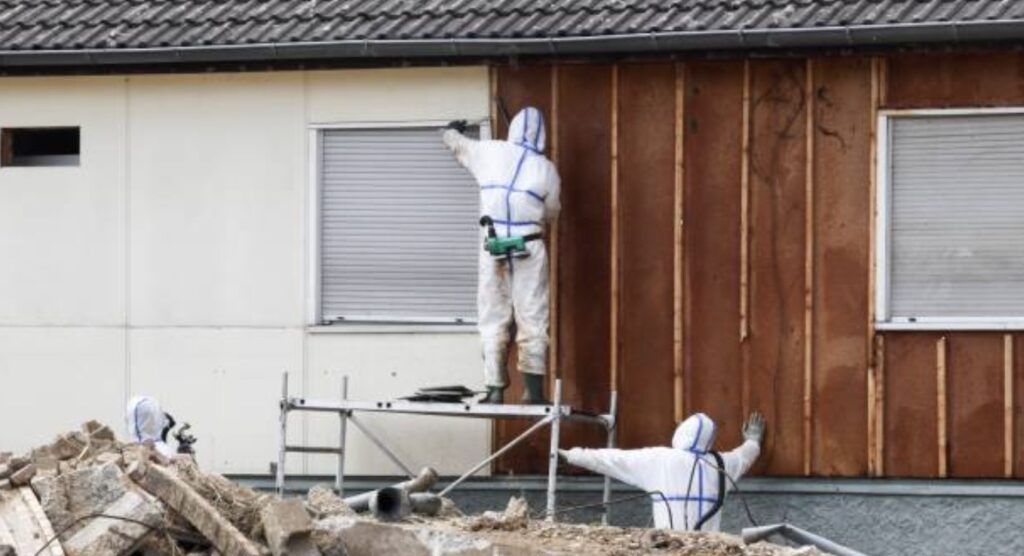An asbestos survey is a formal, regulation-compliant inspection designed to locate, identify, and assess the condition of Asbestos-Containing Materials (ACMs) within a building.
The aim is not merely asbestos identification but to evaluate the risk posed by any ACMs, enabling duty holders to determine appropriate action plans—whether that’s managing the hazard in place, encapsulating it, or removing it entirely.
Asbestos survey outcomes feed directly into the ACM register, forming the basis of legally required management plans. Importantly, conducting a survey is distinct from asbestos removal; it is the first essential step in safe and compliant risk mitigation.
When and Why You Need an Asbestos Survey
Asbestos surveys are legally mandated in several scenarios. One is the duty to manage asbestos in non-domestic or shared domestic premises. Another is before any refurbishment or demolition—such as an office fit-out or loft conversion—where ACMs may be disturbed.

A pre-purchase asbestos survey adds essential protection during property transactions, safeguarding buyers and lenders. Finally, a new asbestos survey is crucial after damage events like flooding or accidental penetration of suspected ACMs.
Asbestos Survey Types Explained
An asbestos screening survey offers a quick visual assessment of the site, involving minimal sampling and reporting, and is suitable for environments where the risk is considered low.
Some of these survey types include the following:
- Screening survey – A rapid visual assessment with limited or no sampling; suitable for low-risk environments. Ideal for preliminary checks with typical costs between £100 and £250 and same-day results.
- Management survey – A standard non-intrusive survey focused on routine occupancy safety. Includes sample collection, priority ratings, and creation of an asbestos register. Usually takes 1–2 days on site and costs £400–£800, with reports delivered in around 3 weeks.
- Refurbishment & demolition survey – A fully intrusive inspection required before any major building works. Examines hidden voids, collects extensive samples, and provides a detailed asbestos profile. Costs range from £800 to £2,000 with a 4–6 week turnaround due to lab processing.
- Pre-purchase survey – A hybrid assessment designed for property buyers or mortgage providers. Combines elements of management and refurbishment surveys to assess potential liability. Priced between £500 and £1,200, depending on scope and property type.
Preparing for Your Asbestos Survey
Ahead of the on-site asbestos survey, gather any existing structural drawings, Health & Safety files, previous ACM registers, and property management records.

Secure access permissions for all areas, including lofts, basements, and plant rooms. Inform tenants, caretakers, or staff in advance to ensure cooperation and streamline the asbestos survey process.
On-Site Asbestos Survey Workflow
An asbestos surveyor begins with a visual inspection, including obscure spaces accessed via borescopes, to detect suspect materials.
Sampling asbestos follows strict protocols, including dampening surfaces to reduce fibre release, using hand tools to collect minimal samples, wearing PPE, and maintaining a documented chain of custody. The friability is assessed visually and through touch (with gloves). High-friability ACMs require immediate attention.
An on-site checklist should track asbestos sampling locations, photo logs, safety procedures, and chain-of-custody records to ensure consistency and compliance.
Laboratory Asbestos Analysis
Collected asbestos samples are submitted to UKAS-accredited laboratories. Most asbestos survey companies rely on accredited laboratory methods to confirm asbestos presence and assess associated risks, including:
- Polarised Light Microscopy (PLM) – A standard method for bulk sample analysis, ideal for identifying asbestos type and content when fibre levels exceed 1%. Suitable for most typical building materials.
- Scanning Electron Microscopy (SEM) – Offers higher resolution imaging and detects smaller fibres than PLM. Used when precise morphology and trace-level detection are necessary, especially for fine dust samples.
- Transmission Electron Microscopy (TEM) – Provides the highest level of detail and sensitivity, capable of identifying ultra-fine, respirable fibres. Ideal for air monitoring and cases where health risks are significant.
Asbestos Survey Report and ACM Register
A comprehensive asbestos survey report includes detailed findings and a register of asbestos-containing materials (ACMs), typically comprising:
- Executive summary and scope – A concise overview of the survey objectives, areas inspected, and the type of survey conducted.
- Methodology – Describes how the survey was carried out, including sampling techniques, laboratory testing methods, and safety precautions.
- Findings and risk ratings – Provides a room-by-room analysis with photographs, sample reference numbers, laboratory results, and assigned risk levels (e.g., high, medium, low).
- ACM register – Lists all confirmed or presumed ACMs with details such as location, material type, condition, and priority level.
- Action codes and recommendations – Includes clear directives such as “Manage in Place”, “Encapsulate”, or “Remove”, helping duty holders plan next steps based on risk.
- Ongoing management tool – The register acts as a live document, updated as conditions change or work is completed, supporting long-term asbestos control.
Action Planning and Recommendations For Asbestos
A detailed action plan should remove high-risk asbestos items—such as damaged, friable materials in frequently accessed zones—within a tight timeframe, often 3 months.
Medium-risk asbestos materials in limited-access areas may be enclosed or encapsulated within 6–12 months. Low-risk, intact ACMs can be managed in place with scheduled inspections. This asbestos risk prioritisation may be summarised in a matrix highlighting risk vs. cost and helps balance safety, regulation, and budget considerations effectively.
Next Steps: Asbestos Survey to Abatement Handoff
Once action items are defined, a licensed asbestos removal contractor provides an asbestos survey report and action plan, which serve as the foundation for tender documentation or the scope of work.
Before licensable asbestos work, an ASB5 notification must be submitted to HSE. The contractor will submit a method statement and asbestos risk assessment, detailing site containment, PPE requirements, negative-pressure systems, and proposed air monitoring protocols.
Asbestos Re-Surveys and Record-Keeping
Per the Control of Asbestos Regulations 2012, a management asbestos survey should be revisited annually and after any structural change or disturbance. Refurbishment/demolition surveys are one-off but must precede relevant works.
All asbestos survey documents and registers must be securely retained for a minimum of 40 years. Digital systems help maintain version histories and improve accessibility, ensuring that duty holders can quickly provide records to contractors, regulators, or new owners when needed.
